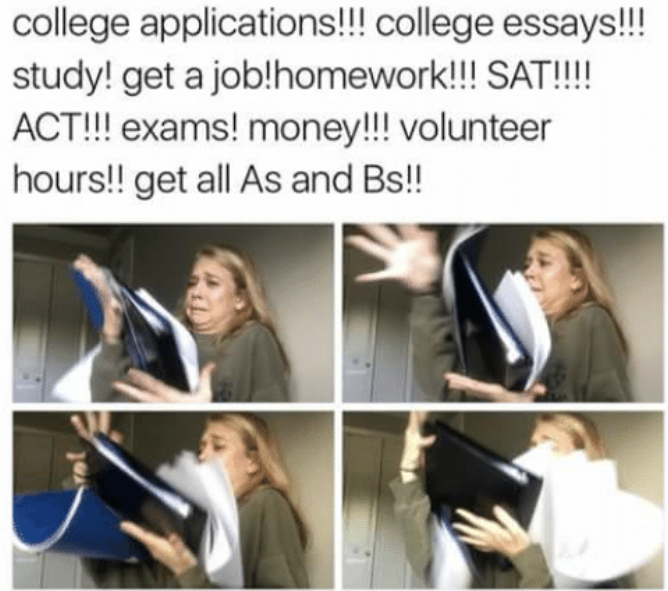Terrified by the College Problem? Don’t Panic
In high school, students tend to encounter one final, terrifying hurdle that they have no clue how to deal with until they are allowed to start their own lives. This hurdle, of course, is the College Problem. The college process, from afar, appears to be a long, grueling, and convoluted process, and it’s something many high school students tend to avoid until the final years; some avoid it out of carelessness, but most avoid it out of fear. In order to expel the lingering fear of the college process, one has to take the time to fully understand it.
A college list is a self-explanatory term: a list of colleges a student makes that they would like to apply for. College lists generally start with 10-20 colleges that a student narrows down as they go through the college process. Building a college list, however, is not as straightforward as it appears. The student must first consider their needs and preferences, ranging from major, location, religious affiliation to the size of the student population. This deliberation should help create a long list of around 20 colleges or so. After this, researching online or visiting the colleges should give the student a good enough idea to narrow their list down to about 10-15. This is when the student should begin categorizing their list into three basic categories: reach, target, and safety. Safety schools are the college choices when a student’s academic credentials (UNIS grades, SAT or ACT scores) exceed the school’s range for the average first-year student and can thus have a fairly high chance of getting enrolled. A target school should have an average range of academic performance that the student falls within, so the student has a considerable chance of getting in. A reach school is a college that the student has a smaller chance of getting admitted because the student’s academic record falls in the lower end or even below the school’s average range for the most recently admitted class.
When students take a step further after the college list, questions about the personal statement on the Common Application (CommonApp) are bound to come up. What should I write about? How long should it be? When they tell me to write a “personal experience,” how personal should it be? The answers to these questions depend greatly on what kind of essay a student intends to write. Every year, the CommonApp website publishes 6-8 different prompts that students can choose from, but they share one common theme – it has to be a story about the student. “The important thing to keep in mind is that you’re writing about yourself, and you don’t want to fixate on a topic that isn’t inherently part of you,” says Sora Kanosue, T4. He notes that to promote oneself as well as possible, it’s a good idea for one to select a prompt carefully that aligns with what he/she wants to highlight the most about him/herself.
Another aspect to think about is the college supplements in addition to the CommonApp essay. Each college publishes different supplement prompts, and it is common for colleges to require them, so one should prioritize writing the supplements for those colleges one puts emphasis on. By the time the student is working on the college process, it will be absolutely essential for them to manage their time wisely. The collective piece of advice that all seniors (and teachers) could give is to get everything done early; there’s only so much they can do before the workload catches up. Hopefully, more understanding of this process will (maybe temporarily) eliminate the imminent fear of the College Problem.









